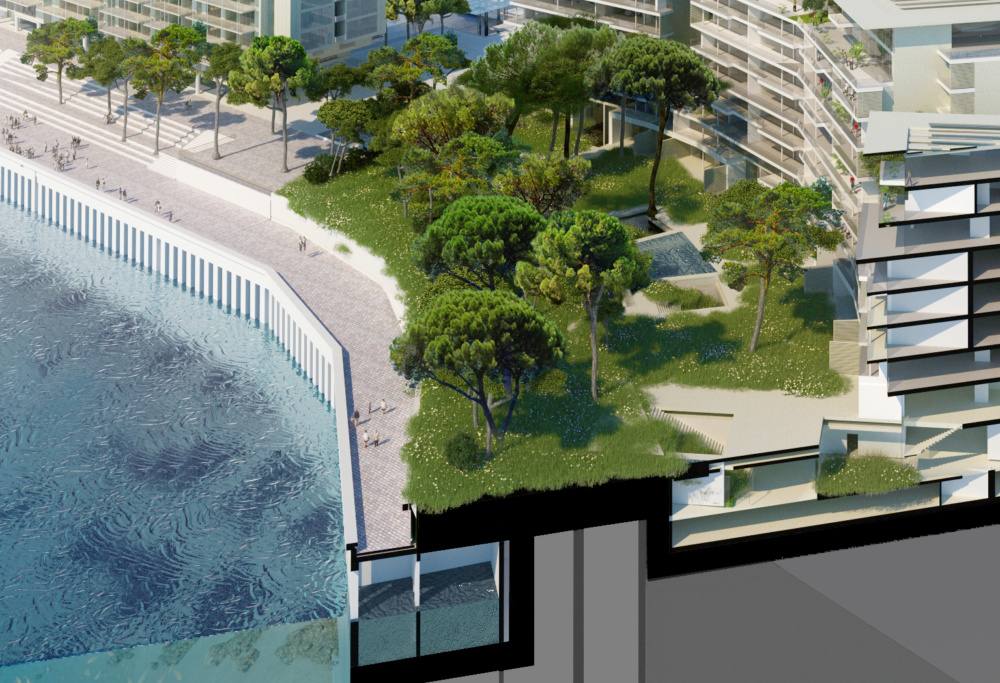“Reversible” Eco-district
Cachan-Pluriels
- The south façades of the Station block and the roof of the Central block were covered with photovoltaic panels, ensuring effective solar protection while forming an integral part of the building’s architecture.
- High thermal performance of the envelopes (glazing ratio > 40%, natural ventilation, solar protection)
- Use of passive systems (ground-coupled heat exchangers, connection to local network for all the buildings)
- Choice of low-carbon and bio-sourced materials (wood for façades, frameworks and carpentry; raw earth for some construction components; low-carbon concrete for the ground floors; wood wool or recycled materials for insulation)
Assessment of the reversibility of the buildings was also a key issue in the project design, with a view to ensuring the buildings’ durability and anticipating societal changes. The layouts and heights of floor tiles in the office spaces were designed to enable conversion to living accommodation that would be both comfortable and compliant with technical standards. A column and beam system, light façades and adaptation of the vertical circulation all make the buildings easier to disassemble.
A district that incorporates and protects nature. Transition management also takes account of the place of plant life in the project. Private and shared gardens, terraces, planted roofs and a hop field have all been added to the vegetal landscape of the public spaces (streets and squares edged with trees, planted pits, open ground spaces). This extended landscape layout helps make the town more porous and helps combat urban heat islands.
Mechanisms for rainwater recovery and management were incorporated into the project with the inclusion of humid zones, installation of recovery tanks for watering green spaces and maintaining shared parts, and installation of water-efficient facilities in the residential buildings.
A district that ensures a healthy and convivial living environment
Unique in its relationship with the station, the Cachan eco-district was designed as a coherent urban ensemble, alive, peaceful, conducive to being neighbourly – chatting, getting together, sharing activities – and providing a healthy, comfortable living environment for its residents. The convenient homes, the facilities and the layouts all contribute to ease of mobility.
This new district was an opportunity to lay the foundations for a mixed-purpose, equitable district that encourages social bonds, inclusion and community spirit.
